I have always been a Claussen Kosher Dill Pickle fan. Forever. I don’t like sweet pickles or bread and butter pickles, they just aren’t my thing. Claussen just tastes better, in my opinion, I don’t even like the shelf brand dill pickles. They are either too sweet or too tangy. That’s why I posted this Claussen pickle recipe several years ago.
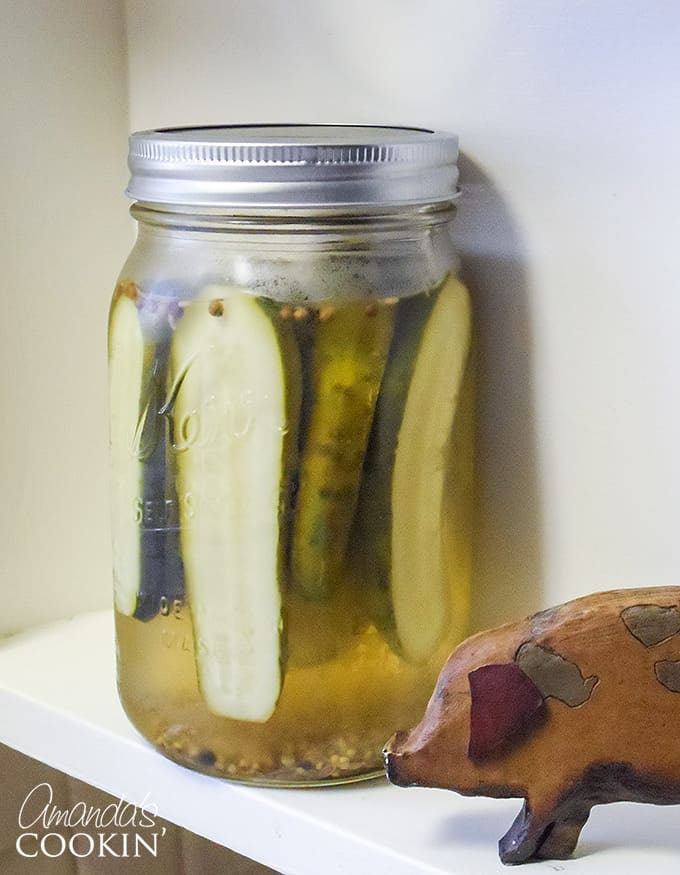
Refrigerator pickles are a lot easier to make because they don’t require using the traditional canning process. That also means they can’t be stored on a shelf in the basement or in the pantry, they must live in the refrigerator.
Recipe for Claussen Pickles at Home
Last year I made some pickles with the canning method and the recipe that I used had a very high vinegar to water ratio. So they were far too vinegary for me to eat straight from the jar, which is one of my favorite things, though they were great on burgers and in potato salad!
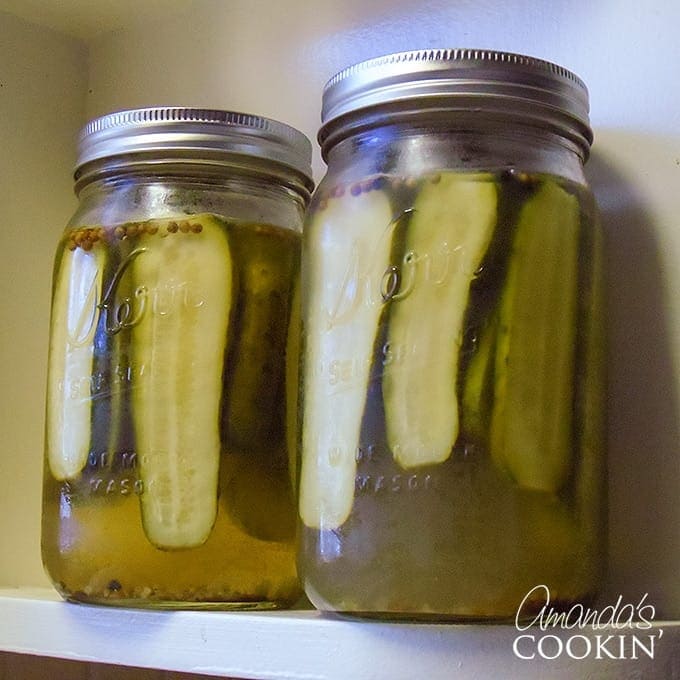
So I started my search for a Claussen copycat. I found this one but it used apple cider vinegar. I as concerned that would create a sweet pickle, which I don’t like, even though the author of that recipe is just like me. Yuk to sweet pickles!
So I looked at the actual Claussen ingredient label and it said they used distilled white vinegar. Some of the ingredients were different too, so I decided to use the recipe that I found as a jumping off point and created my own version.
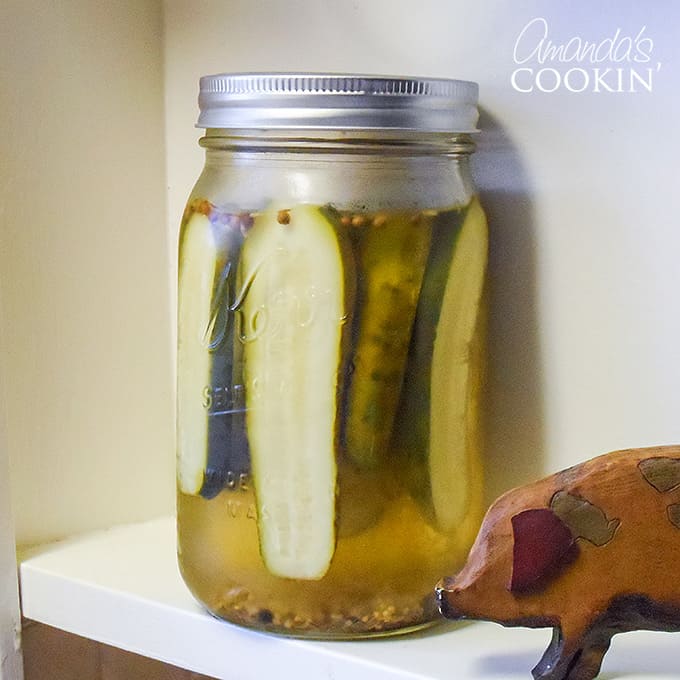
The verdict? Everyone in this house loves them! They aren’t exactly like Claussen, but pretty dang close! Close enough that they get devoured by everyone in this house.
They are actually fun for me to make. So while it would certainly be easier for me to grab a jar of Claussen from the grocery store, and I probably still will now and then, I love making my own.
My first batch was a bit cloudy, and they also had a distinctive mustard flavor. So I cut back the mustard seed in the second batch and I believe we now have a winner. :)
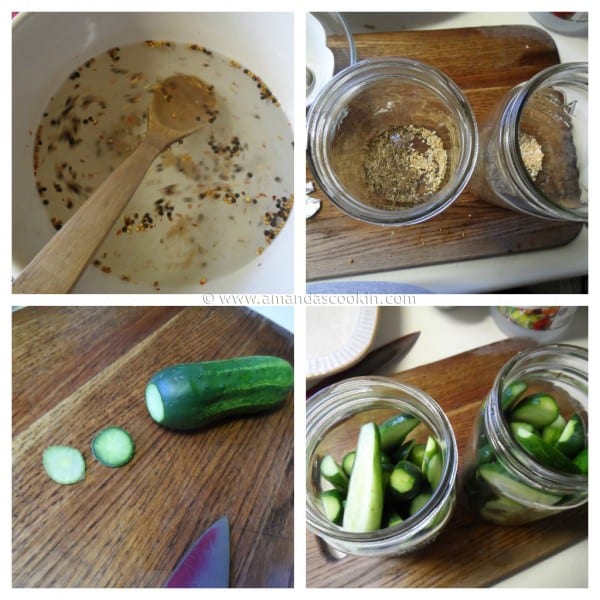
You’ll make the brine first, it’s easiest to do it in a 2-quart pitcher. You’ll see me mixing the brine in a bowl in the picture above. Don’t, it’s an extra step, just use a pitcher. Put the dill seed and dried garlic in the jars.
Now, make sure you give your pickling cucumbers a good rinse, make sure there’s no dirt. Trim the blossom end, I trim both ends, then cut in half lengthwise and distribute in your jars.
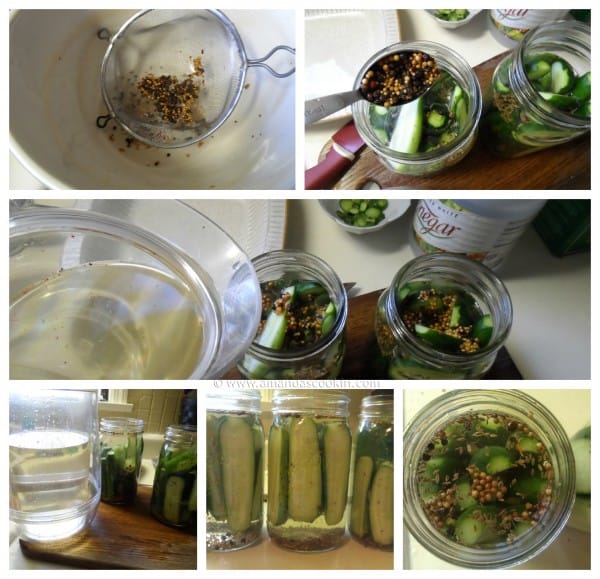
Before adding your brine, strain out the solids. Distribute the solids evenly among the two jars, then add brine. You will have leftover brine that can be discarded when you are all done.
When you perch the kid on your jars, you want air to be able to get in and gases to be able to escape.
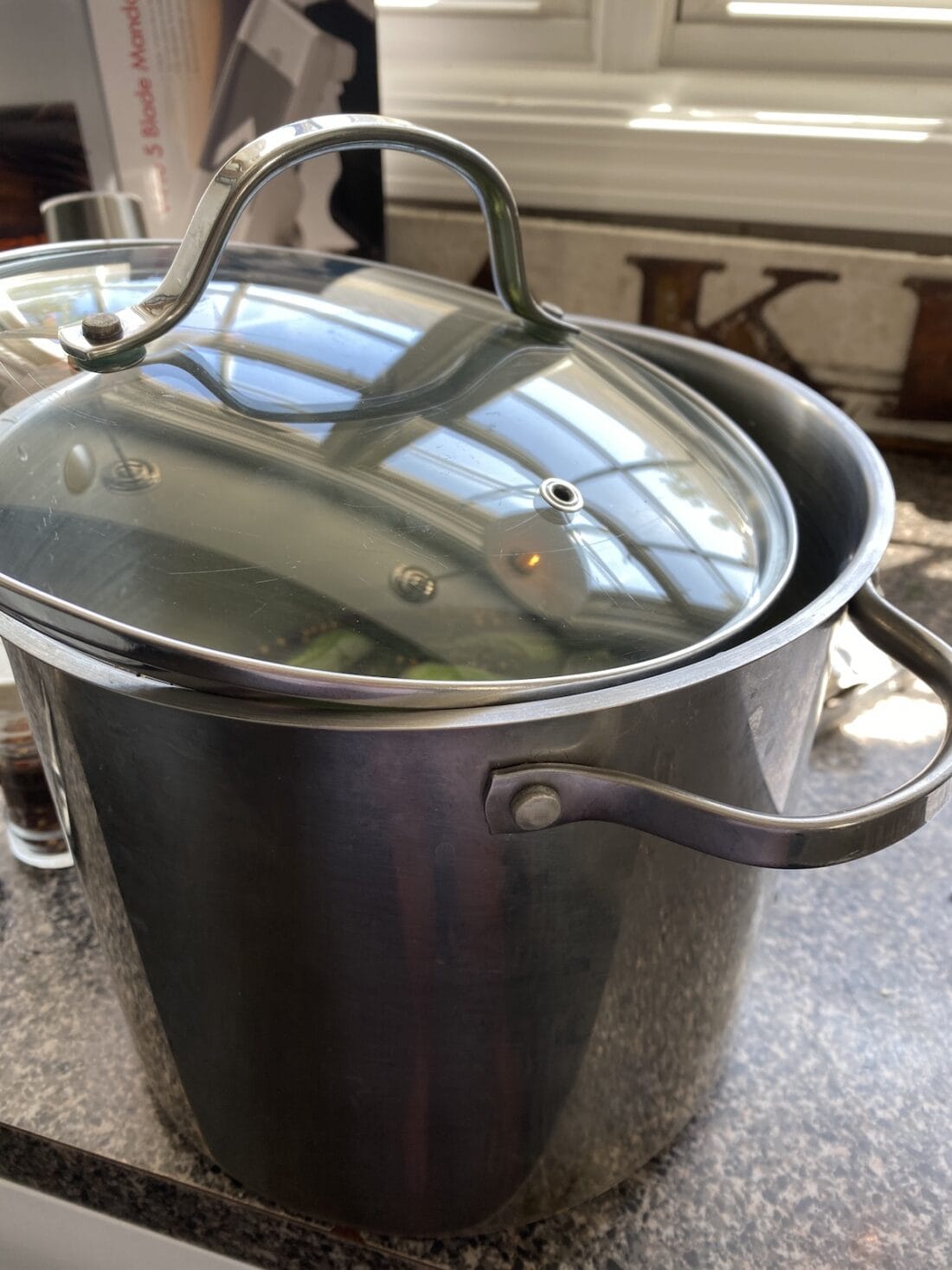
I actually put my pickles in one big pot now and then move them to a large covered glass container in the fridge instead of using jars now. Someone in the comments asked for a picture of perching the lid, you can see that above.
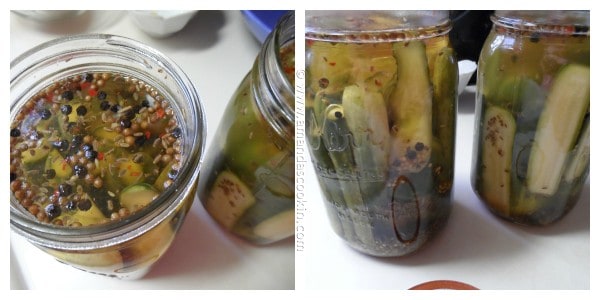
This is what they will look like after a day or so. They usually take 2-4 days. My first batch took the full four days while my second batch was ready in two and a half days. I think the difference was that I actually used three jars and they weren’t packed as tightly.
Enjoy – crunch!
Troubleshooting your pickles
Scum or film on top – During your first few days, fermentation takes place. You will probably see bubbles rising to the surface and may see some “scum” forming on the surface. Skim this off and discard. This is a completely normal step in the fermentation process.
White sediment at the bottom of the jar – According to Colorado State University, “A white sediment at the bottom of the jar may be caused by anti-caking agents in the salt or by the fermenting bacteria. Neither cause is harmful.”
According to Colorado State University “…factors that lead to spoilage include failure to remove blossom ends, failure to thoroughly wash products to be pickled, not removing the scum that accumulates on curing brines, using a weak brine or vinegar solution, not keeping the pickles covered with brine throughout the curing process, using deteriorated ingredients such as moldy garlic or decayed spices, or storing the pickles at too warm a temperature.”
You can download the complete PDF document from The Colorado State University here.
Important Tips to Note
The Blossom End
The blossom end of the cucumber (the end opposite from the stem) contains an enzyme that can make your pickles turn mushy. Always cut it off, I cut off both ends for good measure and to keep them uniform.
Vinegar
Use vinegar that has at least 5% acidity. Don’t reduce the vinegar in this recipe.
Salt
Only use pickling salt or coarse (NOT flaky) Kosher salt, though I always use pickling salt. Table salt contains an anti-caking agent that causes the brine to get cloudy. If you use table salt, it’s still safe, but you will have a cloudy jar of pickles with white sediment at the bottom.
Cucumber Types
Use cucumbers that are of the knobby variety, grown specifically for pickling. Check seed catalogs to find the different varieties. Cucumbers with a wax coating are not recommended as the brine will not be able to penetrate them. When selecting cucumbers, be sure that they are firm and not soft.
Wash Your Hands!
It’s tempting to reach in and turn your cucumbers, but please make sure you wash your hands first. Introducing any foreign oil or material from your skin could cause problems with your brine.
When your pickles are all gone, do you pour the pickle juice down the drain? Instead, try these ideas for reusing pickle juice! Looking for a unique recipe to try with your freshly make pickles? Here’s a Grilled Tomato Relish that’s great on burgers and dogs!
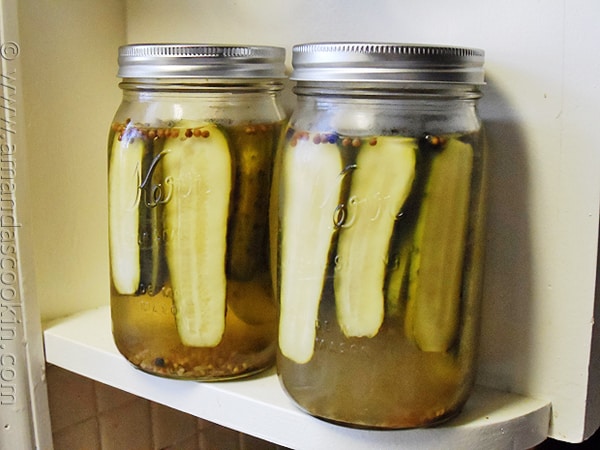
This Claussen pickle recipe was originally published here on September 18, 2012
More Related Recipes
- Cucumber Salad
- Sweet Corn and Chickpea Salad
- Grilled Corn and Zucchini Salad
- Pickled Beets
- Pickled Onions
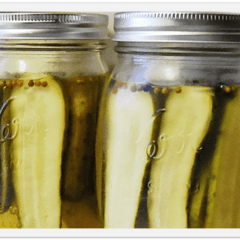
Homemade Claussen Pickles Copycat
IMPORTANT – There are often Frequently Asked Questions within the blog post that you may find helpful. Simply scroll back up to read them!
Print It Rate ItIngredients
- 20-25 small to medium pickling cucumbers
- 2 quarts cold water
- ½ cup white vinegar
- ⅓ cup canning/pickling salt or coarse Kosher salt
- 1 teaspoon coriander seed
- ½ teaspoon mustard seed
- ¼ teaspoon red pepper flakes
- 1 tablespoon black peppercorns
- 1 tablespoon dill seed
- ¼ teaspoon dried garlic
- Fine mesh colander
- 4- cup measuring cup
Instructions
- To make the brine, combine water and vinegar in a large pitcher. Add salt, coriander seed, mustard seed, red pepper flakes and black peppercorns. Stir until salt is dissolved. Set aside.
- Wash cucumbers in water and trim 1/8-inch off of the blossom end of each one. Slice each cucumber in half lengthwise.
- Divide the dill seed and dried garlic evenly between two clean quart sized jars. Fill jars with cucumber halves, fitting as many in as you can, they may be snug!
- Stir brine again to mix ingredients. Place a fine mesh colander over a large bowl or measuring cup. Pour brine through the colander, catching the brine solids in the colander. DO NOT discard!
- NOTE: You will not be able to fit all the water in this measuring cup or in the two jars. The goal here is to save the brine solids and use them, you will be discarding the left over vinegar and water mixture when finished.
- Once all the solids have been removed from the brine, distribute them evenly among the jars. Using the brine liquid in the measuring cup, pour into the jars until all the cucumbers are covered.
- Your brine level should cover your cucumbers and reach the bottom of the jar neck where the twisting begins. The cucumbers will also release some liquid as they brine, so don’t overfill the jar. Discard any remaining brine liquid.
- Cover lightly with a lid perched on top but DO NOT close and seal. Leave on the counter (out of direct sunlight) for 1 day, then move to the refrigerator for 2-3 more days, or until the cucumbers taste like pickles throughout.
- Secure lids on jars and refrigerate for up to six months.
Nutrition
Amanda Davis
Latest posts by Amanda Davis (see all)
- Banana Bundt Cake - July 23, 2024
- Lemon Icebox Cake - July 22, 2024
- Philly Cheesesteak Dip - July 15, 2024
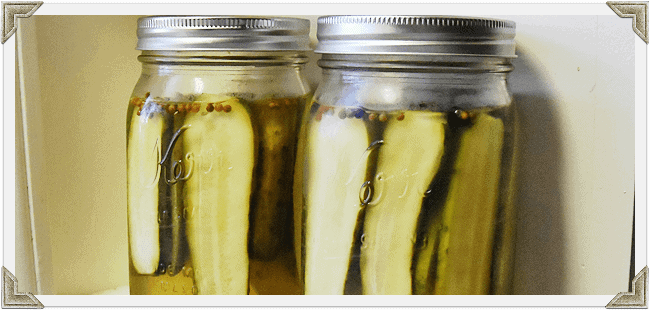
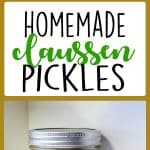
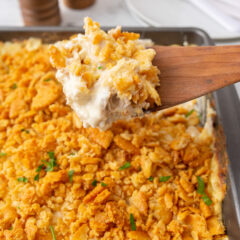
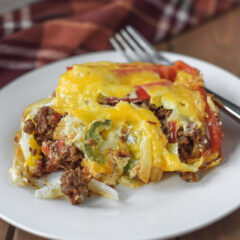
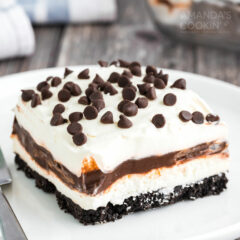
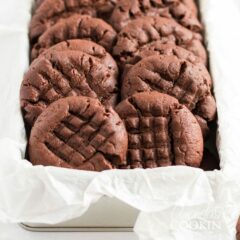





Jody says
Why should the pickles be left uncovered for three days? I don’t understand the science there. Thanks for any clarification.
Annika says
This recipe is super good. I loved it.
I’ve made a lot of pickles and just used my leftover cucumbers (not pickle variety) and it turned out great.
On my latest batch, I was in a hurry and I forgot the vinegar after I already put them in the jars (only for about 2 hours). I removed them from all the jars ans emptied the non-vinegar salt water to repeat it properly. However, the cucumbers are salty. When I remake the solution, should I half the salt or just leave it knowing this batch might be a little too salty.
Amanda Formaro says
I would just start over with the suggested ingredients.
Badmodo says
Using cukes from our garden, cut into spears, this was a pretty good recipe, I did find that they were a bit peppery, I’d scale back the peppercorns and use a little more vinegar next time, but thanks for a good recipe!
Beth H. says
Hello! I am trying this recipe for the first time. I filled jars as directed and made sure the pickling cucumbers are staying submerged. Smells pretty good so far, hooray! I do not see any of the “foam” or ‘bubbles in my jars – am I doing something wrong, or it is okay? I did not seal the jars and left the lids canted as described in the notes. I am excited to see how this turns out! I am a rookie canner, this being my only my second season canning. Please let me know if “no foam” is normal. Thank you.
Amanda Formaro says
It should be fine. Do you have the lid on and tilted?
LAURA WOODMAN says
Something isn’t quite right. Followed the recipe to the t.
Ellen L Russell says
Can I use fresh dill? If so, how much?
Amanda Formaro says
I have not used fresh dill myself, however one commenter suggests using 4 heads of fresh dill per jar. I’ve seen comments of others who have used a handful of fresh dill. So ultimately the answer is yes.
Howard Berkowitz says
Everything I have been reading says you need at least one to one water and vinegar, this way less which makes the recipe dangerous, tru?
Erin says
This is for refrigerator pickles, NOT canning pickles. They these must be kept in the fridge and are not shelf stable.
Natasha says
Very interesting recipe with the mix of fermentation and quick pickling–I just jarred some up tonight. I think it would be very helpful to use weights for the salt, since salt by volume isn’t a reliable measure. I used a brine calculator on mine (after I made it) and it says 6%, so these might be really salty; hope not. Will get back in a couple days to let you know how they came out! Thanks
Natasha says
Wanted to come back and say these are really good! I used grape leaves from the garden and glass weights to keep everything under the brine, and they came out so crunchy and vinegary, but not mouth puckering. These have a much better texture than Claussens, in my opinion. I might reduce the salt a little next time, trying for 4.5-5% by weight vs. the 6% I had, but honestly, these are less salty than my fully fermented dills sometimes come out. I’ll be making these again, because Claussens have gotten ridiculously expensive where I live. Thanks so much!
Amanda Formaro says
So glad to hear it!
Shannon says
Maybe I missed it somewhere in the recipe, but what size jars should I be using? I originally bought quart, but definitely rethinking that now
Amanda Formaro says
quart sized jars
Patti says
Easy process & pickles are awesome! Thanks
Deni Laf says
Hey Amanda, thanks for your balanced responses. Some of your innocuous readers are over the top hostile.
Tia the season ~ garlic scapes are being substituted for cucumbers.
Michelle Biediger says
These are incredible! Turned out great!
Daniel says
Your recipe is garbage. The water to vinegar ratio is way off. You cost me time and money. Please delete this recipe or fix it.
My pickles tasted like water after following your directions exactly…
Mad Daniel!
Amanda Formaro says
Sounds like you either made a mistake or used the wrong ingredients. Sorry you had trouble.
tracie L richards says
Can ground coriander be used in place of seed? If so how much?
Amanda Formaro says
Use 3/4 teaspoon ground coriander instead of the seeds
Bruce Bartlett says
This tip is 100 times easier. As your jar of Clausens declines, replace them with cut Persian cucumbers. In 2-3 days you’ll have a pickle with taste and texture that is 98% Clausen. You can do this 2-3 times before the brine where’s out, or more depending on your taste.
Patricia Livingston says
This is brilliant!
Edosan says
Can these be canned after they ferment for a week or so? I look forward to trying the recipe out.
Amanda Formaro says
These are refrigerator pickles, not a canning pickle.
Oldina says
These pickles are amazing. Salt and vinegar would inhibit botulism
Jennifer says
Made my third batch yesterday and I can’t wait to eat them! Quick question, do the pickles stay uncovered when moving them into fridge after first 24 hrs? Or should they be sealed when moving to fridge? Thanks for sharing your delicious recipe!
Amanda Formaro says
Don’t close the lids, a the instructions say please wait 2-3 days before adding the lids
Devon says
Pretty sure I got botulism from this recipe. She states that these can stay good for 6 months. I noticed a cloudy substance at the bottom and 4 out of my 8 jars (2 months later) had mold at the top. Going into urgent care tomorrow to test for it.
Jon says
What was the final verdict?
Trm says
I truly hope you have recovered.
For anyone using the recipe, I am not the one who created it – however the 1/3cup salt to 2 quarts water exceeds the 3% salinity needed to prevent the growth of botulism. And that is without the addition of acids which botulism also dislike.
So long as the cucumber remains submerged and white cloudiness at bottom of jar is the by product of lactobacilli – which are used in saline solutions to make probiotic pickled foods.
I can attest to having eaten habanero and carrots sitting for 1 year at room temp — not heat treated. And it was entirely safe. Because of the salinity and subsequent acid formation as part of the lactobacilli
Always discard anything foul smelling. Puffy. Moldy (with some minor exceptions if you know what you’re doing). And especially anything stored without 3-5% salinity or a PH higher than 4.6 if it was stored at room temp for more than 4hrs.
Rich says
If you had botulism, you would not have been capable, let alone interested, in posting your comment. But thanks for doing your best to derail a perfectly fine recipe that I have made to a “T” and then modified. As noted, there is far more salt in this then is needed to prevent anaerobic bacterial growth. Nice try.
Anthony says
Good recipe, I think it needs more vinegar and it definitely needs more garlic. If you look in the bottom of the claussen jar there’s always way more garlic than these.
I’ve made these several times with few changes.
Thank you for not telling people to use apple cider vinegar in a claussen clone. It’s just wrong.
Kent says
Anthony, agree. I doubled the vinegar and use fresh garlic (6 cloves for the whole batch)
Larry says
I’ve been making just the juice to help with cramps and it taste excellent. Then I actually tried to add the cucumbers to it and they donstill taste Iike cucumbers . SonI waited for two weeks and checked them again and the tops were moldy. What did I do wrong?
God of Pickles says
Everything
Kayla says
The cucumbers need to stay fully submerged to prevent mold